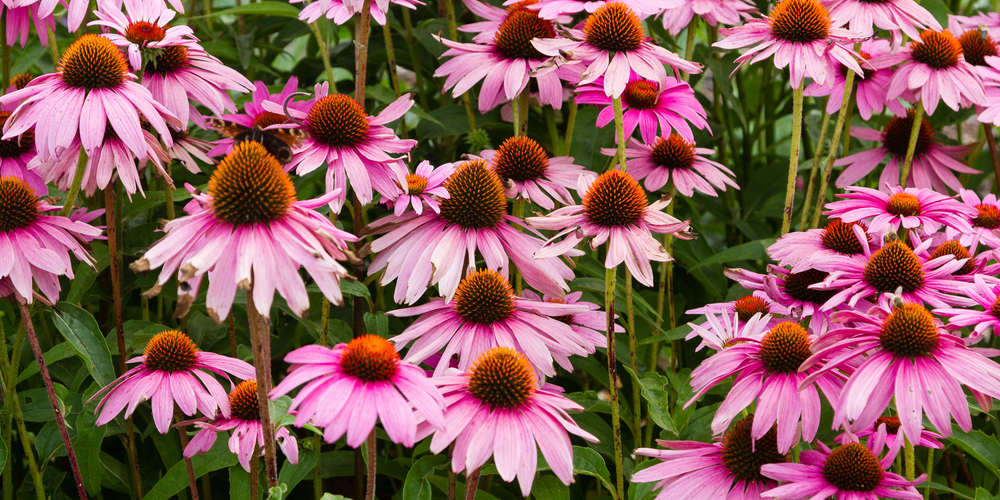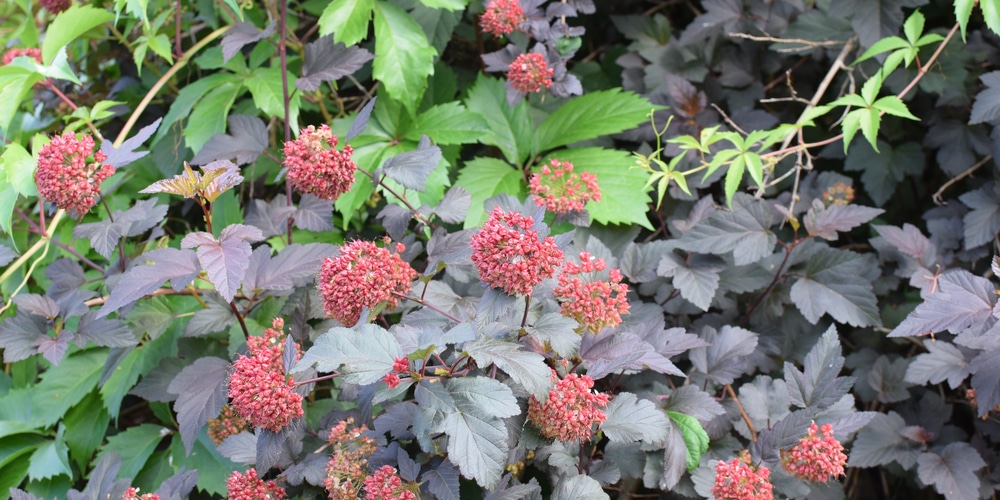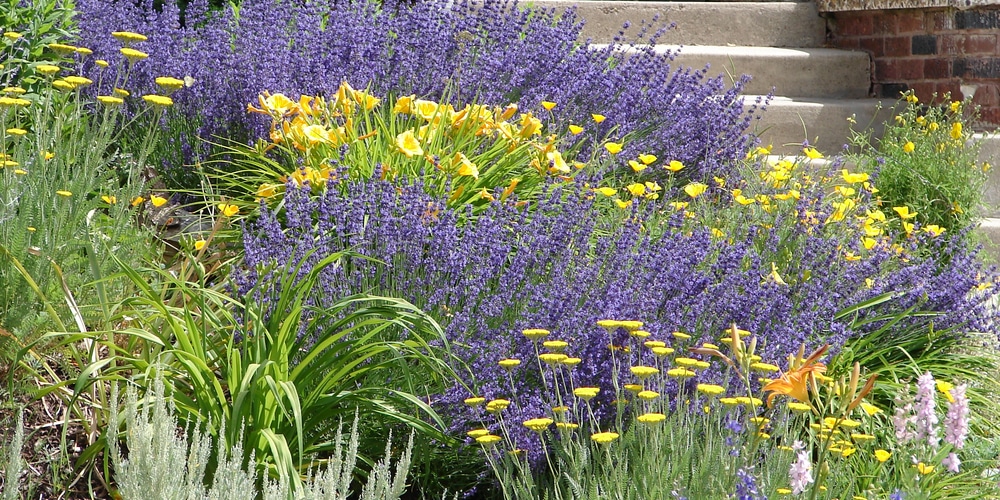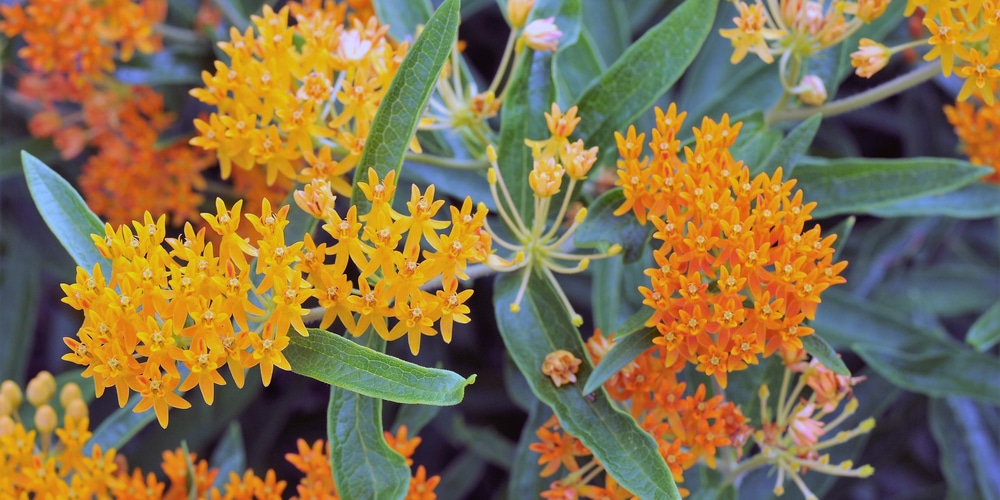If you’re looking for an easy to grow perennial that works amazingly in any garden, then coreopsis is a perfect option. The bright yellow, almost daisy-like flowers in the summer are truly beautiful, and the thin bright green foliage also adds a lot of character to a garden. But what about coreopsis companion plants? Well, since coreopsis is often used as a standalone plant to naturalize an area, companion plants aren’t well known. Today, though, we’ll clear that up for you!
1. Purple Coneflower

The purple coneflower is an excellent companion plant for coreopsis for a number of reasons. First, they’re both perennials, but not ones that will compete for your attention.
Purple coneflowers are taller and coarser than coreopsis plants, making them much more distinct, but still offering both flowers equal chance to shine as coreopsis tends to only reach a height of 18″ or so.
The colors work amazingly together too, with the purple and yellow flowers produced by the coneflower and coreopsis respectively making a classic combination that makes any garden instantly more attractive and relaxing.
Second, neither the purple coneflower nor the coreopsis likes to be in fertile, moist soil, so to grow them both you need soil that has good drainage and it can even afford to be a little rocky and a little dry, since both plants are quite hardy and capable of dealing with most situations.
2. Ninebark Bush
What a ninebark bush adds to a coreopsis plant is texture and lots and lots of it. When looking at ninebarks, they have an almost bark like texture, which we definitely think would work with coreopsis.
Coreopsis tends to have a much lighter, almost airy texture about it because of the small thread-like foliage it has. Yes, the yellow flowers add a little more to the plant, but that’s only in summer, and the rest of the year they’ll be screaming out for contrast.
That’s where the ninebark bush comes in. In addition to the contrast, ninebarks also grow much better in well-draining soil since they also do badly when sitting in water for extended periods.
There is one snag though, and that’s ninebark’s USDA hardiness zones. Generally, it can grow from 2 to 7 well. Coreopsis, though, prefers zones 1-3, so there is only a small window of opportunity if you’re hoping for these plants to thrive together.
3. Russian Sage
Russian sage is the sort of plant that can make any garden feel a little more wild and natural. Growing up to 1.2m tall, with beautiful sprouts of purple flowers all over, the Russian sage plant looks amazing.
But why is it especially great for coreopsis companion plants? The height difference, for one, is a great reason for planting these two plants together, because the much taller Russian sage can add a lot of drama to a sometimes flat coreopsis mound.
The colors too, are an excellent combination, with the purple of the Russian sage working with the yellow coreopsis in a brilliant way, and perhaps even more so than the purple coneflower above.
Perhaps the best reason for growing these two plants together is their hardiness, though. Russian sage is known for being able to grow in soils and climates many other plants can’t deal with. So, if you’re in an area with ‘poor soil’, both Russian sage and coreopsis can thrive.
4. Butterfly Weed
OK, the butterfly weed might not be your first thought for color, since these bright orange flowers might seem like they’ll clash with the vibrant yellow of coreopsis, but honestly, they work together well, creating a point of striking visual interest in any garden.
But one thing we haven’t mentioned about coreopsis so far is how much the butterflies love them. And, surprise-surprise, butterflies love the butterfly weed too.
By having both planted in the same garden, you’ll be able to attract far more butterflies, which will create a much more natural and beautiful garden than you had before. This can be very rewarding.
Better yet, both these plants will absolutely adore full sun, although they can tolerate a few hours of shade a day each if they must. Really though, the sun blazing down on these yellow and orange flowers is the perfect summer treat for everyone that sees them.
Coreopsis Companion Plants: Take-Home Message
Coreopsis is a beautiful flowering perennial that can transform a garden, but its beauty can be enhanced with some well-chosen companion plants. There are more coreopsis companion plants you can find, but these four are our absolute favorites, and any one of them will work wonderfully with these bright sunshine yellow plants!


